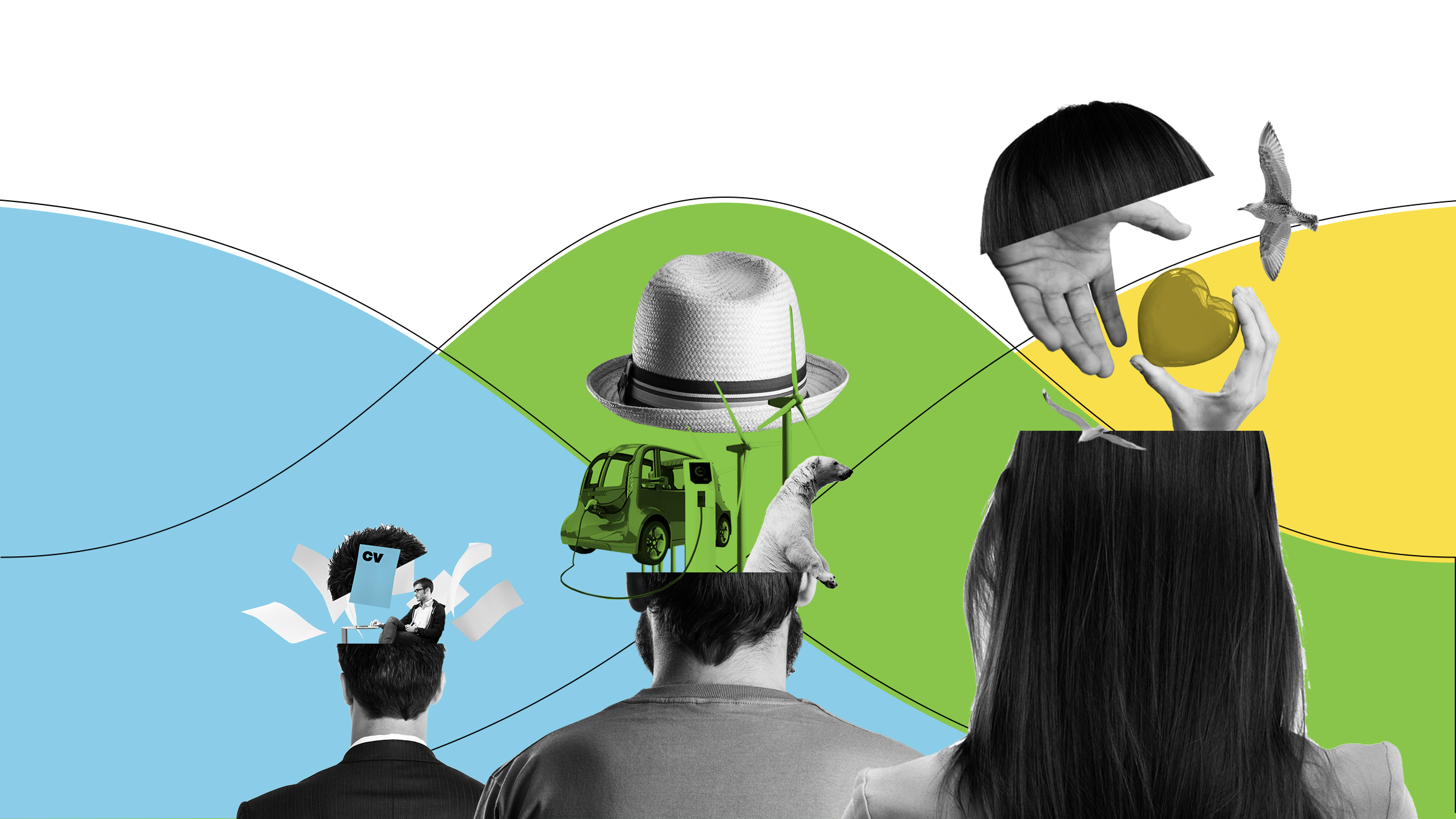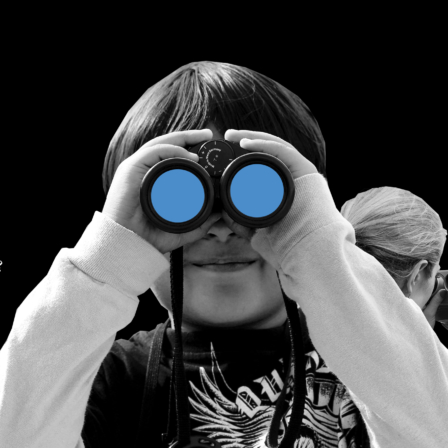A societal vision typically describes a systemic change, i.e. a significant change to the current structures and operating methods. Therefore, it is important to crystallise what will change, how the change will be communicated to others, and what the possible attitude towards the vision will be.
With this tool, you can forecast the possible objections that the vision might face and identify opportunities for co-operation with different parties. The tool is based on the 3 Horizons method (see www.iffpraxis.com/3h-resources and www.h3uni.org/).
The tool examines the vision from different points of view using three characters.
- Brake is committed to how things are at the moment. They are conservative by nature and focus on minor changes and adjustments. The character represents the current state.
- Bridge-builder is interested in new opportunities that can be realised right away. They understand the vision but want actions relevant to now. They are practical and opportunistic by nature. The character represents the transformation phase.
- Visionary wants a radical change towards the world they envisage. By nature, they pay attention to the thick lines instead of details, perceive the big picture and are interested in describing another kind of a world. The character represents the vision.
These three characters can take a negative attitude towards each other, which results in finding out possible causes of conflict, or a positive one, which results in finding out opportunities for co-operation.
Do the following
- Describe the vision to the participants in a concise form. It can be useful to focus on a single theme at a time. You can also use the vision of the Next era of well-being as a template for the discussion.
- Divide the participants into groups of three and hand out character cards to each person. Each group should include a brake, a bridge-builder and a visionary.
- First, the participants will have a moment for creating a background story for their characters and thinking about the good and bad things about the presented vision from the point of view of their own character.
- First, discuss from the negative perspective, i.e. the participants aim to dismiss one another’s points of view of the vision and highlight their own negative insights.
- For example, the visionary thinks that the Next era of well-being takes the current societal structures too much into account.
- After 10 minutes, switch to a more positive perspective. Now, the participants aim to find a mutual understanding and possible opportunities for co-operation regarding the view of the future.
- The visionary, for example, appreciates the level of ambition of the Next era of well-being and the fact that carefully analysed megatrends are set as its boundary conditions.
- After 10 minutes, come together and discuss the observations that emerged during the discussion. What was the attitude of the different characters towards the vision, what kind of conflicts might it give rise to, and what opportunities for co-operation were identified?
- You have now examined the vision from different points of view and are probably able to communicate it while understanding the needs of your different target groups. Perhaps you noticed that something about the vision was not comprehensible to the characters. Specify these things further.
Example
After a presentation on the Next era of well-being, people divided into groups of three. One of the groups decided to focus specifically on work and income. In this group, the visionary started by stating that work will change radically and the only way to secure a welfare state is to make radical changes in basic social security and come up with ways to ensure the distribution of wealth. The brake stated in response that work has not changed much, at least not more than before. The bridge-builder wanted to know how the visionary thought that the new kind of basic social security could be provided and how it would be funded. They also remarked to the brake that even though nothing has changed yet, it does not mean that there were not changes coming. In the discussion, the participants defended their own views and sought weaknesses in others’ views.
After a short discussion, the group switched from negative discussion to positive discussion and sought opportunities for a mutual understanding. The bridge-builder identified experiments that would enable the move towards the kind of future described by the visionary. The visionary said to the brake that they appreciated the brake linking the discussion to history and previous progressions, and asked how they thought that the matters described in the vision should be presented. The brake emphasised involving the various stakeholders in the discussion, to which the visionary added that it might be a good idea to also identify stakeholders that will be significant in the future.
In the final discussion, the groups shared their experiences of the discussion and the insights gained during it. The participants felt that the exercise was particularly useful in telling others about the vision, as it helped in understanding several different points of view. It had also been easy and fun to take on the different roles.
Material
See the slides for the exercise here (includes cards on the three points of view of the exercise to print out, slides 7, 8 and 9).










More tools
Use these to move forward